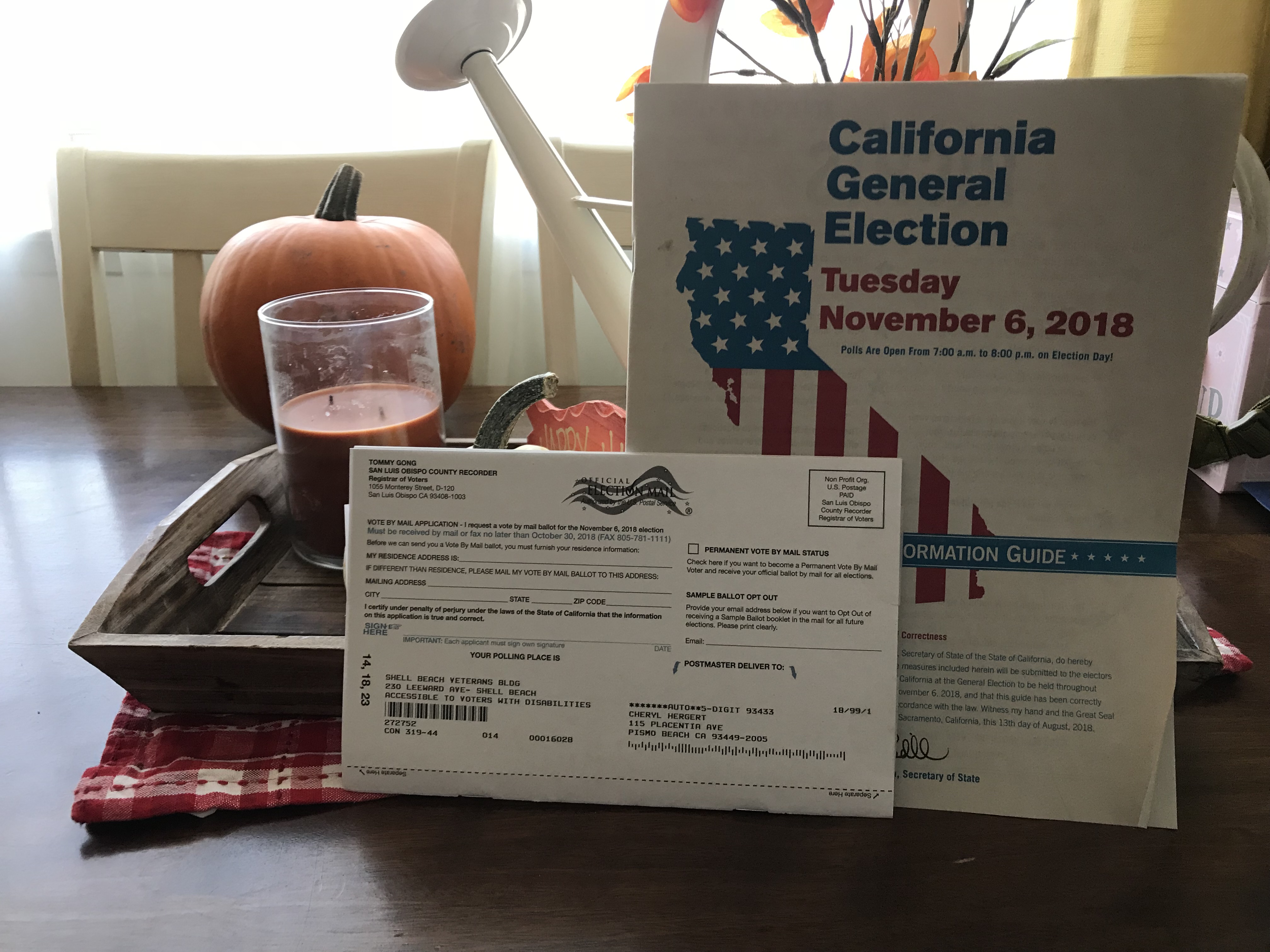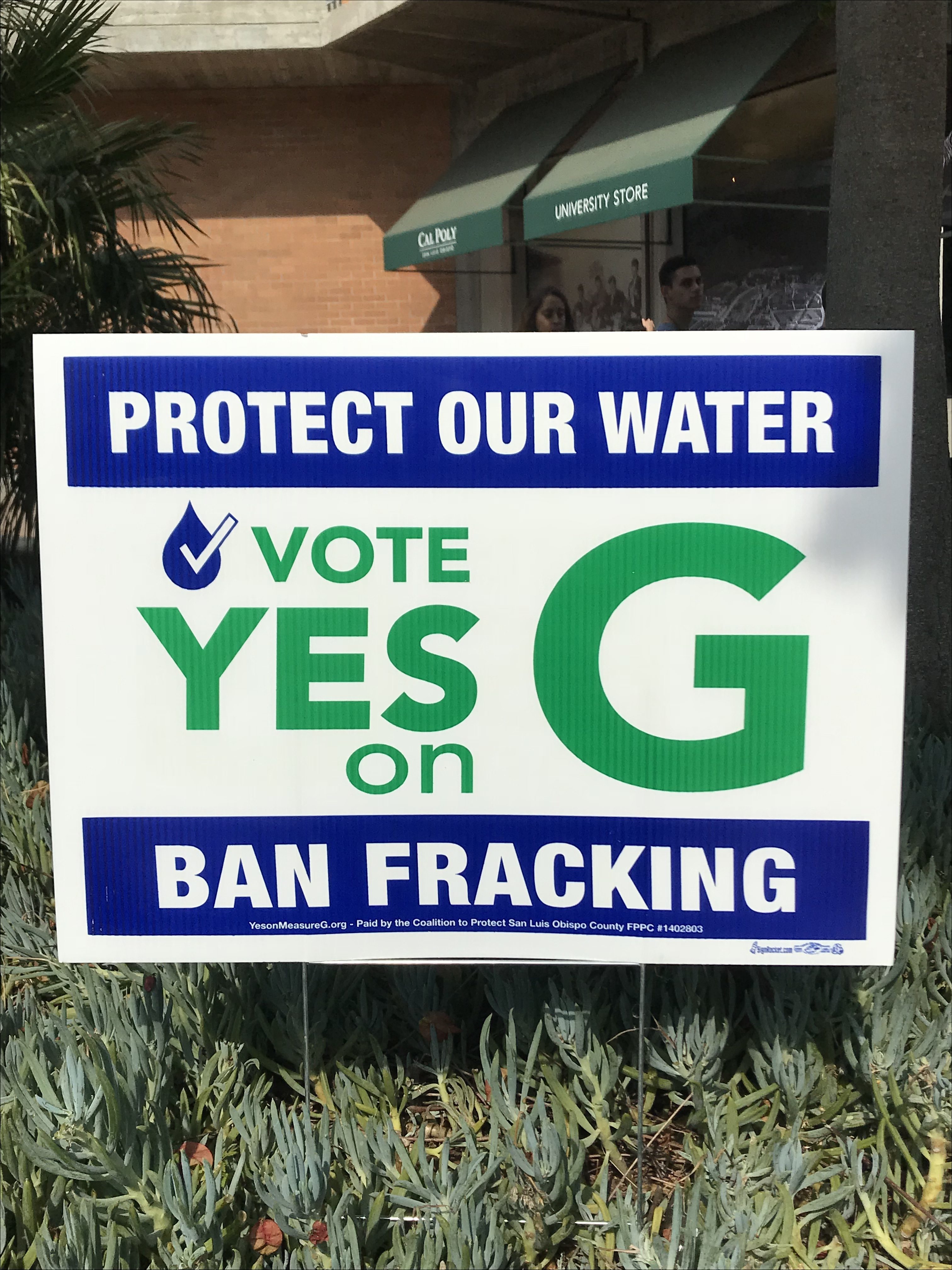With the upcoming elections, Measure G has been a very popular topic around San Luis Obispo. We often see the signs stuck in our neighbors’ yards reading “No on G” or “Yes on Measure G,” but we haven’t truly taken the time to understand what this measure means for all of us living in the San Luis Obispo county. Maybe you’ve read the Tribune article on Measure G, or possibly saw The Mustang News article on Dominique Dashwood, a Cal Poly student who has dedicated her time to Measure G, or the article explaining the initial steps San Luis Obispo county took to potentially ban fracking . Either way, we observed that as a whole, San Luis Obispo and Cal Poly want to know more about Measure G.
As journalists, it is our job to inform the public. We spend our time finding sources and proving facts so that the community doesn’t have to. In covering this topic, we spent a large amount of time finding the facts and learned a lot on the subject that surprised us.

Measure G
Measure G is simply “a county-wide measure to ban fracking and new oil wells in [San Luis Obispo]” according to environmental management and protection senior Dominique Dashwood. Dashwood has been working on this campaign since last academic year and spends many hours a week tabling in the University Union. She works closely with Charles Varni the co-founder and co-chair of the coalition to protect San Luis Obispo county. Varni helped write Measure G and explained to us the impact this measure has on schools if “No on G” passes and the tax revenue is lost.
“I am 100 percent in support of Measure G. It’s specifically about fracking and other related technologies, but, frankly, all fossil fuels in the ground need to stay there,” said mayor Heidi Harmon. Harmon is a strong advocate for “Yes on Measure G.” She has made climate change a large part of her campaign to be re-elected as mayor of San Luis Obispo. “[W]e are in deep, deep trouble when it comes to climate change and that we need to act right now if we have any chance of creating a livable planet,” said Harmon.

Our Roles
Working as a team we each had a part in researching this topic. I was in charge of the team communication as Strategy and Engagement, Hollie West wrote the article and Jillian Smith created interactive components for the piece.
Jillian possibly had the toughest job as she was supposed to create video teasers, however having only three team members we didn’t have anyone in Audio/Visual to make a video for Jillian to promote. “The challenging part for me was wrapping my head around the Instagram story component of my part. I am not an Instagram story person, so knowing that I was going to have to do one stressed me out a little bit at first. However, once I realized that I didn’t have to follow the guidelines EXACTLY as they are since we are missing the video part of our story, I was able to feel more at-ease with it,” said Smith.
Another challenge we endured was getting an interview with someone who actively stood behind “NO on G”. Though we had lists of names and contact information, we were only able to get input from a couple of sources after consistent efforts to contact them. Luckily, for “Yes on Measure G” we had many sources who took the time to talk with us, sometimes even twice. This did make it tough to get both voices out fairly.
“The most challenging part of this story was trying to report in an unbiased way in regards to an issue that I have a strong opinion in,” said West. Already having a strong opinion does make it tough, especially with the opposing side not contacting us back. “Professor Bisheff’s climate change comparison in class helped me figure out that I don’t necessarily have to give equal weight to both sides of the conversation if it is not actually equal.” West, however, was able to find a few opposing sources other than students and did her best to create an informational article.

Conclusion
Overall, we all learned a lot about what Measure G really means. There are many false claims mentioned on the “No on G” website that is consistently pinned to the top of any Measure G google search. Through our research, we discovered that not only does voting yes on Measure G not cost anyone their job, but it does not call for the shut down of existing oil extraction sites either; two strong claims backed by “No on G”. Rather, the purpose of Measure G is to stop creating more extraction sites.
Covering Measure G has been a great practice in journalism. As I mentioned before, it is our duty to inform the public correctly and to help everyone understand the facts, and I feel as though we did the best job we could. “No on G” has a lot of funding and advertisements, but “Yes on G” has a lot of events and campaigners who have reached out to us and personally explained their purpose and drive.